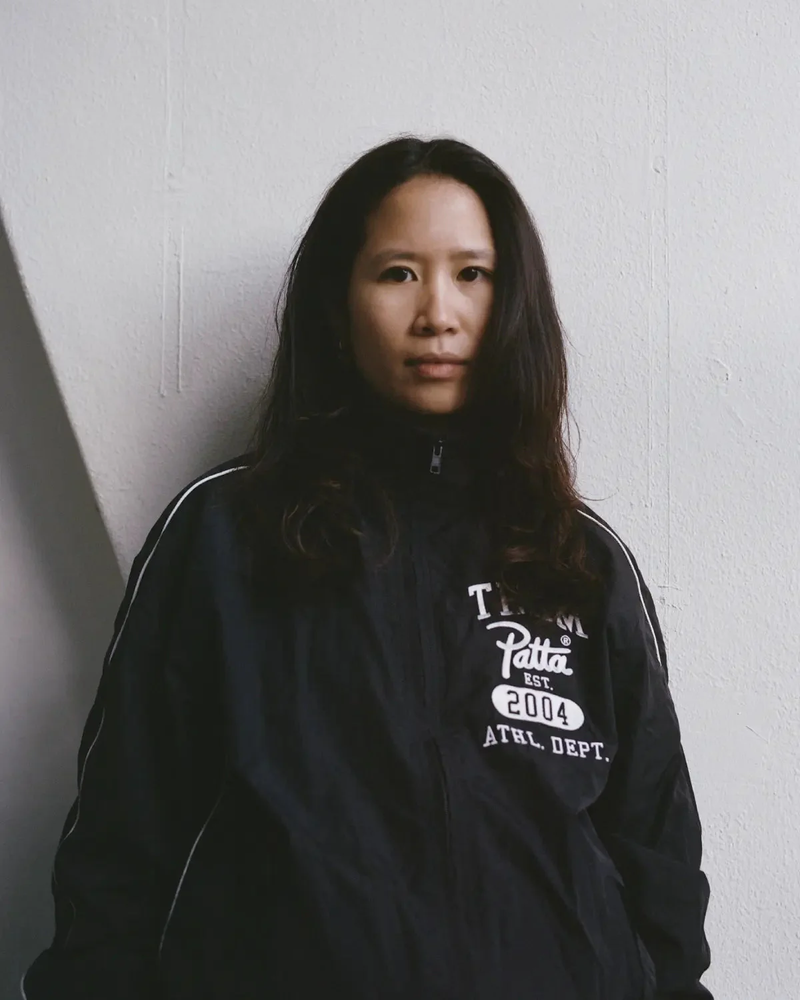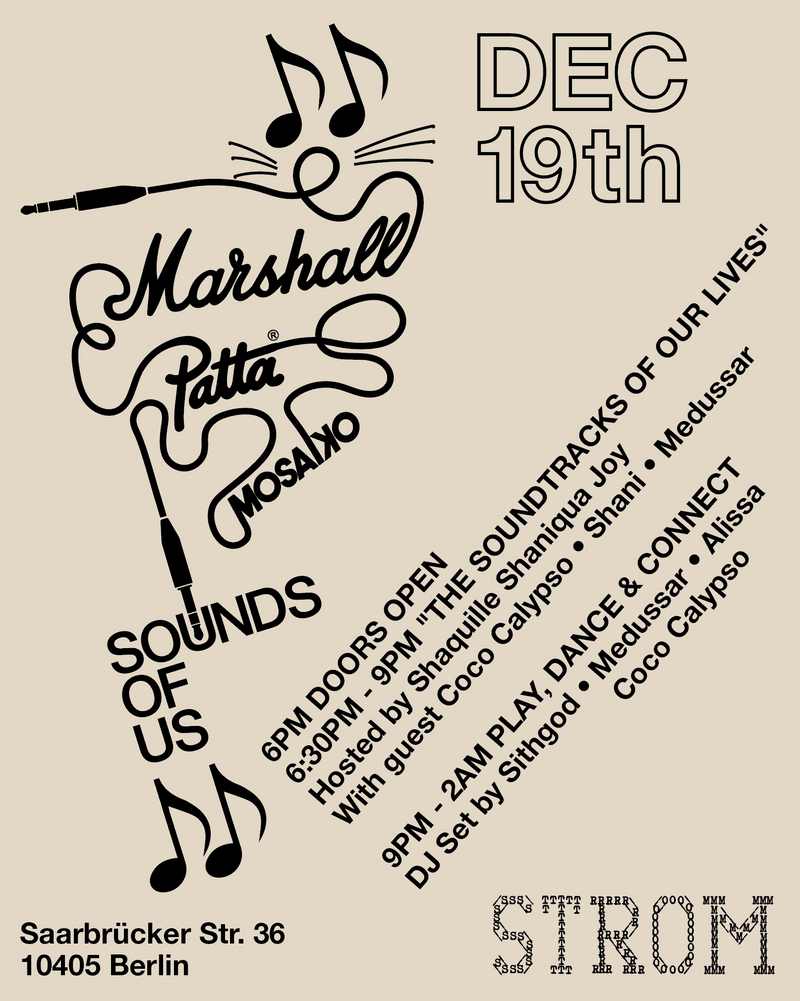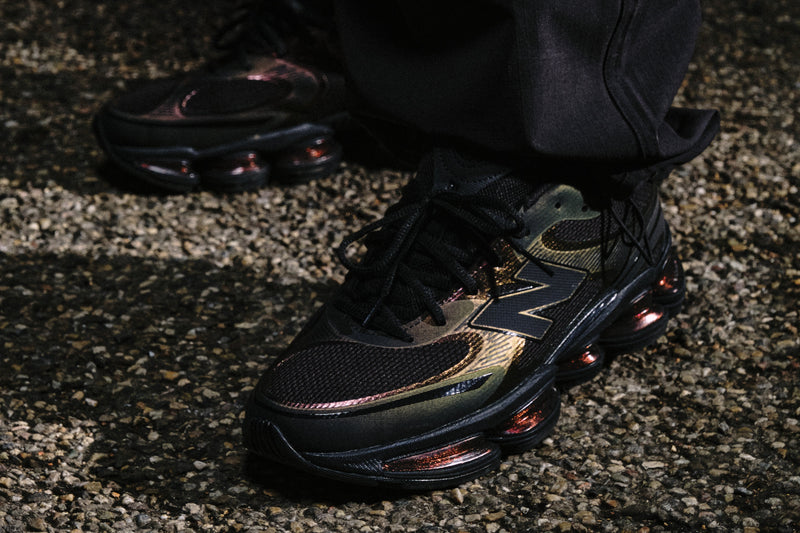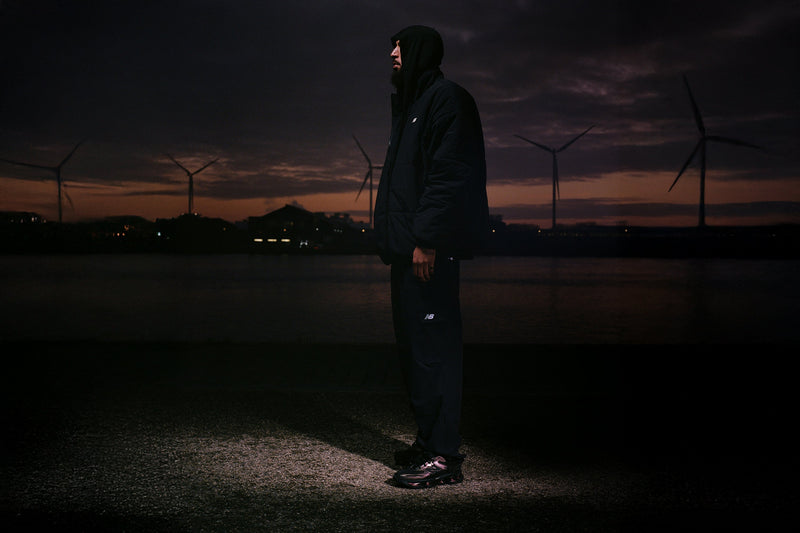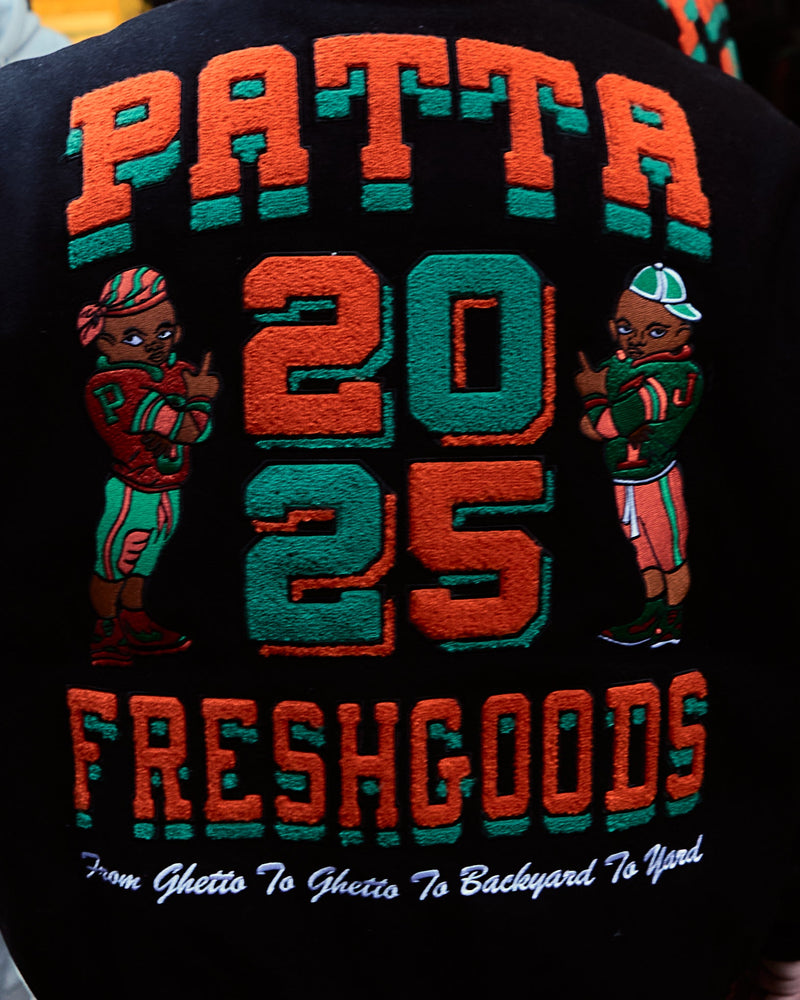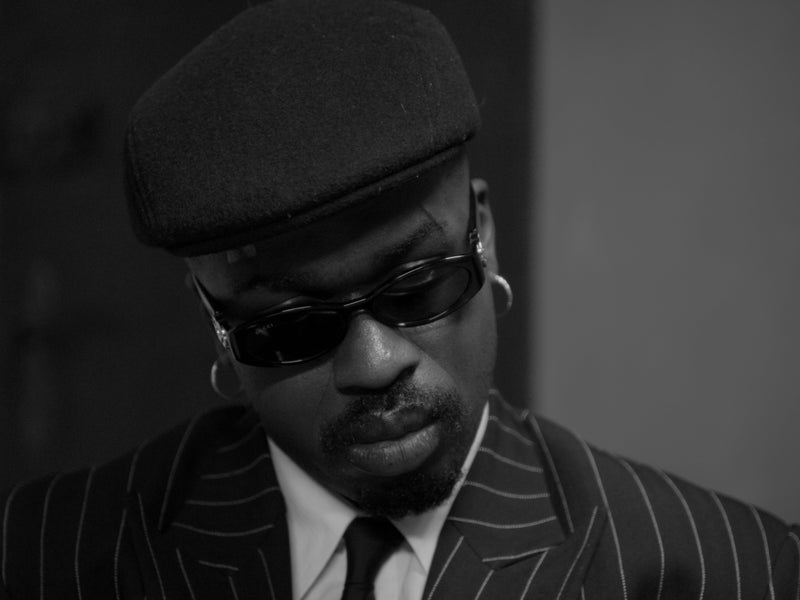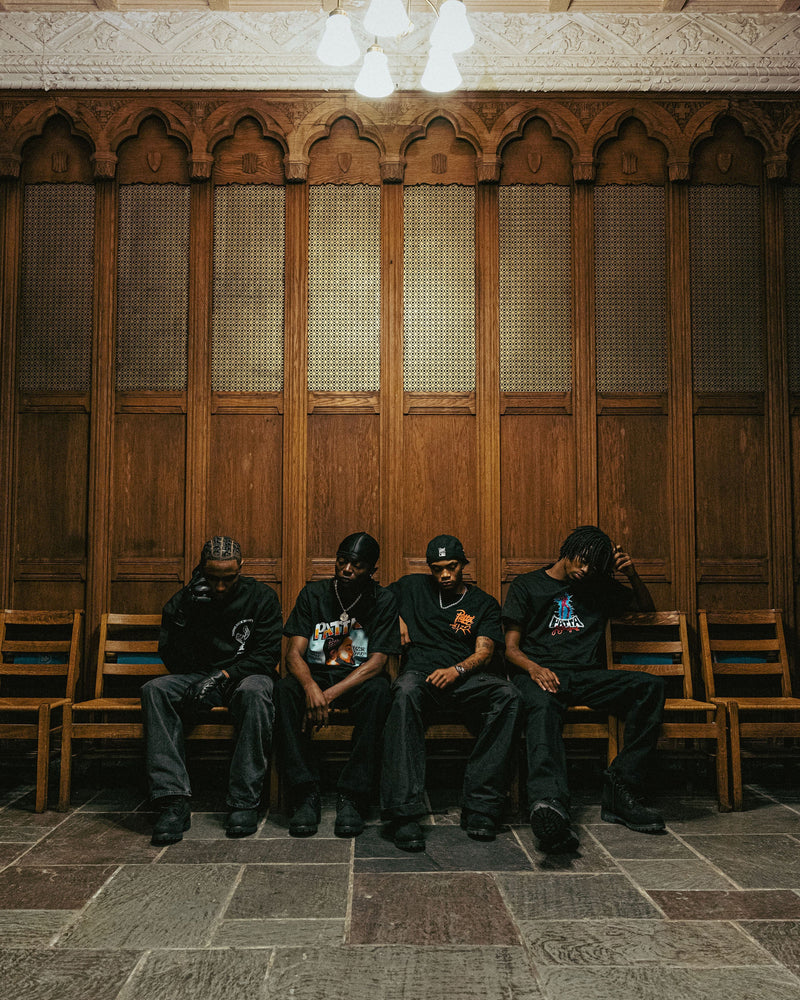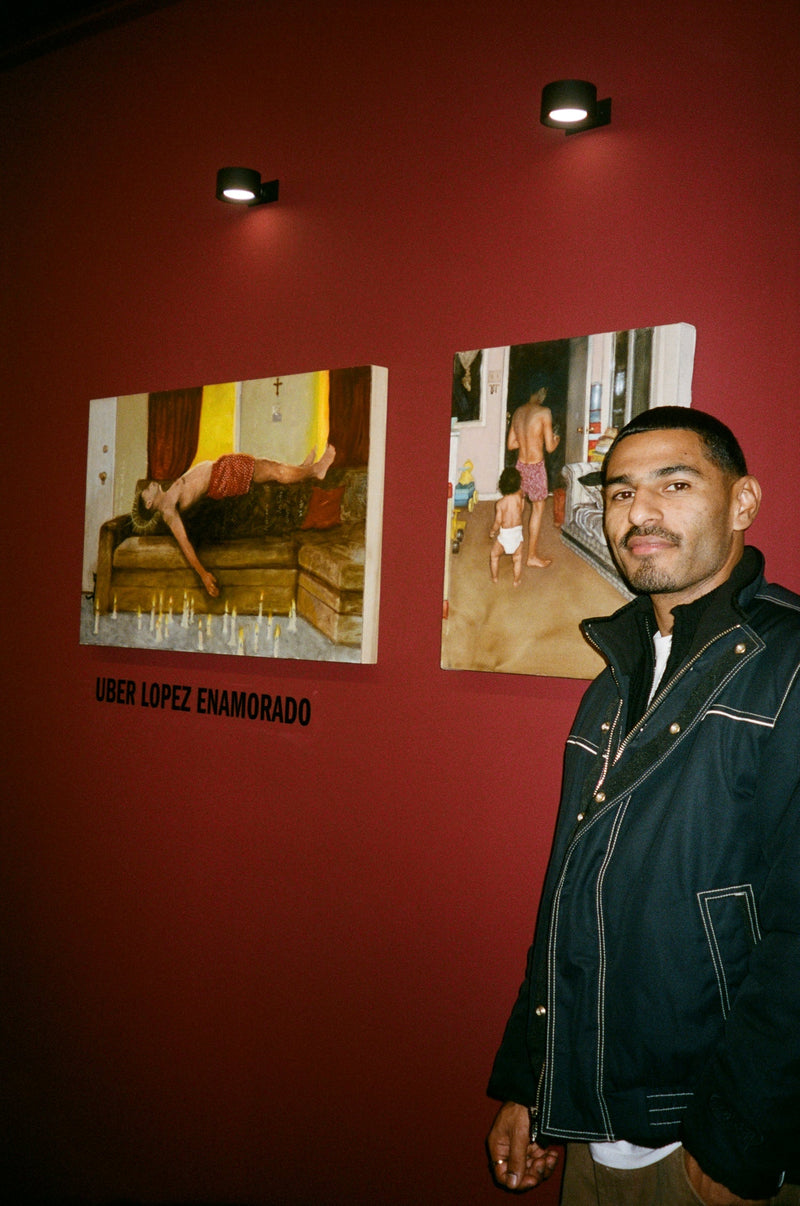
Farida Sedoc for Patta Magazine
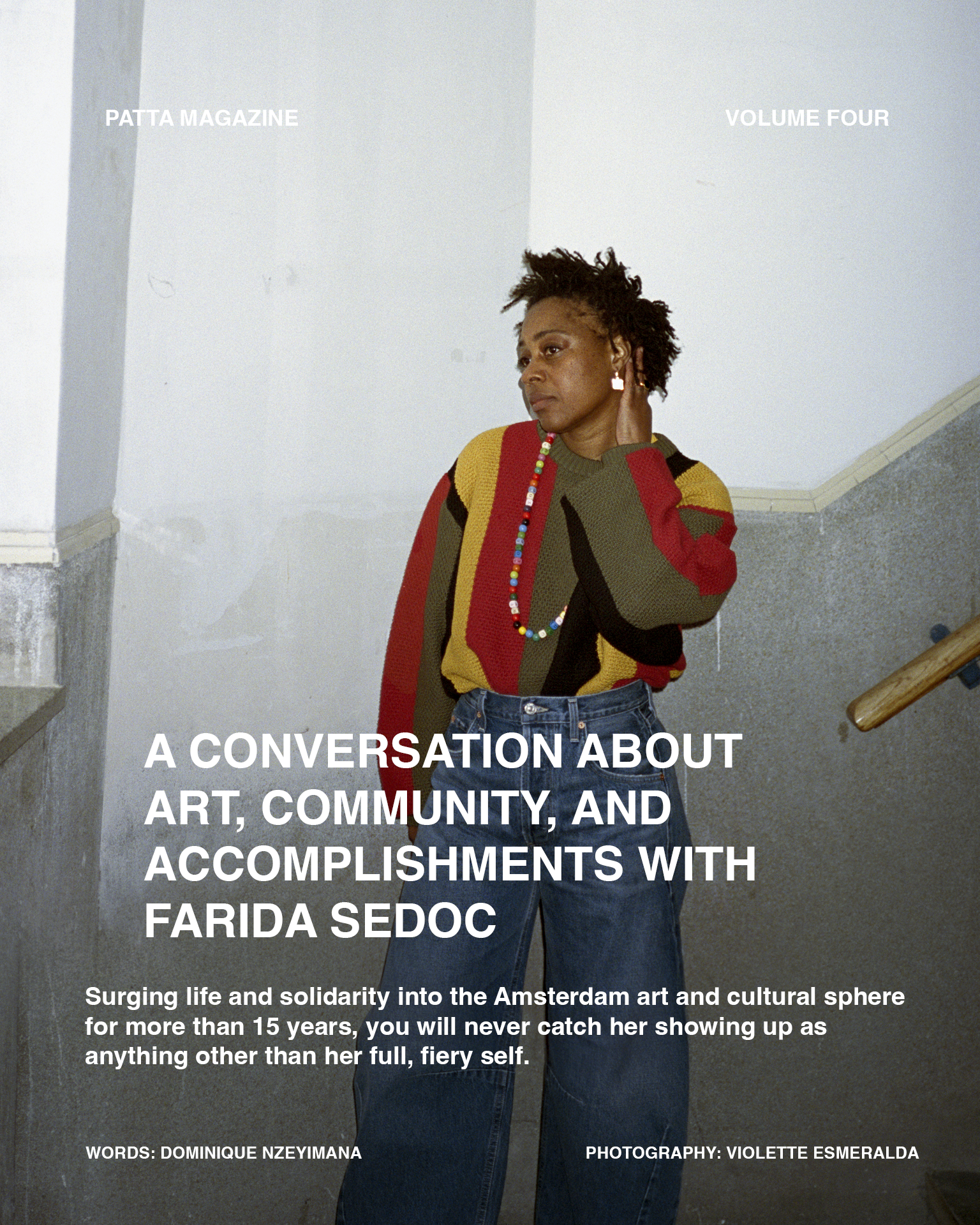
Farida’s work doesn’t just engage; it rallies while exploring intersectionality and the influence of monetary economics, heritage, and politics on the future of globalism and community life. Hip-hop, punk activism and social care are all themes the acclaimed multi-disciplinary artist puts on wax via screen prints, textile art, murals and beyond.
Her label HOSSELAER (est. 2008) has collaborated with Patta and Junya Watanabe, while her oeuvre includes a partnership with Emory Douglas, artist and former Minister of Culture for the Black Panther Party, in collaboration with HipHopHuis Rotterdam and work for Stedelijk Museum Amsterdam. Farida also recently designed a beautiful book and the visual identity for Our Colonial Inheritance at Wereldmuseum Amsterdam, where her art installation occupies an entire room. As the newly crowned winner of the Amsterdam Prize for the Arts - Work of the Year for her solo show and art market People’s Forum, Farida levelled the field, bum-rushed the show and won big. For those usually left looking up. For the underdog. For the arts. For the people.

DOMINIQUE NZEYIMANA: Cover girl!
FARIDA SEDOC: “A 44-year-old cover girl! Nice!” (laughs)
DM: Congratulations on your major Amsterdam Prize for the Arts win! I’d love to talk about the process behind People’s Forum, your now award-winning exhibition. I witnessed first-hand how fantastic it was. How did you land on wanting to do it and when did you start building it?
FS: “Some years ago, I had a conversation with Fadwa Naamna, an artist and curator living in Amsterdam. We’d worked together on an exhibition at the Stedelijk Museum Amsterdam. During that time, we talked about W139 - the independent art space squatted in the ‘80s by artists looking for alternatives to the traditional art world. W139, much like major institutions such as the Rijksmuseum or the Stedelijk, is often debated in the Dutch art scene, especially when it comes to its funding and future. The Netherlands has this unique, discourse-driven subsidy system free from commercial influence that supports critical thinking. W139 was on shaky ground financially around then, as Fadwa and I discussed alternative ways to sustain such spaces. The concept of organising a bazaar came up and I suggested an art market where artists could sell anything they wanted, not just their work. The idea clicked, and Fadwa invited me to develop it further when she joined the artistic team at W139. Initially, we planned it for 2021, but the pandemic delayed everything. A couple of years on, we set a date for late 2023. Working with W139’s new team and co-curator Claudio Ritfeld, we started drafting budgets, securing funding and coordinating logistics together with technical and supporting staff. It was a long road. In the Netherlands, curators often have to source their own funding instead of working with a pre-approved budget. It makes the process complex. It’s like: ‘Hey, do you want to do an exhibition?’ If you say: ‘Yeah!’, they reply with: ‘Oh, also, we don’t have any money.’ (laughs) And then if you’re still up for it, you start building a case to get funding.”

Photographed by Pieter Kers, W139, 2023, Exhibition People's Forum
DM: That takes a lot of faith!
FS: “Of course, you get some money while you’re working on your bid. But it does highlight the vulnerability of the art world. Institutions might provide a buffer but for artists, financial uncertainty is constant. It’s a system that often limits opportunities to the privileged few. After months of development and waiting, we finally secured backing from sponsors. So, after the 2022 group show Non-profit At All Cost I curated at NEST in The Hague, I was officially invited to do my first institutional solo show at W139. I wanted it to serve as the backdrop for a public programme that could engage wider audiences beyond the art world – a decision that also tied back to certain funding requirements. The market became part of this programme, spanning two weekends. Half the vendors were people we know and the other part was curated through an open call. They joined us, offering everything from independent magazines and music to clothing, crafts and handmade goods. Athenaeum Boekhandel hosted a pop-up, vinyl sellers brought their good shit and local artists added something unique. Artist advocacy group Platform BK had an office-in-residence. We also hosted workshops every Friday to help artists professionalise their artistic practices. These sessions covered everything from navigating contracts and understanding AI to owning your rights and working with digital art. Lawyers with art backgrounds guided participants and answered questions. For me, it wasn’t just about the market but about creating a space where artists could experiment, collaborate and exchange. The collectivity of it all was powerful.”

DM: How did you approach the Farida Sedoc - Solo Exhibition part of it?
FS: “I was working on what I love most: screen printing. I had been collecting images and when I thought about the huge space at W139, I initially wanted to make large works that would have an impact. But creating several big pieces wasn’t doable time and budget-wise, so I decided to make about 40 smaller works instead, hung in a single round-about line as one cohesive series. I also want to add that the graphic design and spatial design was done by Heavy Bones, and the success of the show as a whole was greatly impacted by this. It allowed me to focus on the story I wanted to tell rather than being overwhelmed because I had to fill the room. I also love doing research, so I set out to explore feminist archives. But the pandemic made access difficult. Instead, I went to my mom’s house and found a trove of books and self-published ‘80s magazines. The themes were still deeply relevant today, so I took pages that caught my eye and used them to create new prints and collages. One moment that stood out was finding old newspaper clippings about my father and my mother’s university friend. It highlighted the importance of migrant communities documenting and sharing their own stories, rather than having them told by others. This inspired me to create works that imagined new futures while building on past stories - a way of reflecting on our own narratives and shaping what’s to come.”

DM: What was the most important takeaway from the overall experience?
FS: “People’s Forum proved that it can be whatever you want: selling your art, the cookies you baked or even clothes left lingering in your closet. Artists have many facets. The beauty was that you weren’t forced to sell your art, if you made the best hot chocolate in Amsterdam, you were welcome to sell that. It forces you to reconsider what defines your practice and how you want to make a change in the world. At its core, it was about sharing resources and challenging the exclusivity and pretentiousness of the traditional art world. It responded to the idea that artists must follow a set path: go to art school, land a gallerist, make work in a studio and then let the gallery sell it. But that’s not the only way. People’s Forum showed there are many paths to success and no shame in a non-linear journey. The market also brought accessibility to the conversation. Artists reserved tables for 25 euro and sold whatever they felt like, with some making 600 euro, enough to cover their rent for the month. How great is that!”

DM: I love how you have this introverted energy that I completely relate to, but yours almost always gets overruled by your care for the collective.
FS: “I, myself, love working alone. I’ll be in my studio, minding my business, chugging away. But when I’m ready to step outside, a lot of my work is about shared energy. Not everyone is entrepreneurially inclined, yet the system often demands it. People’s Forum is a DIY approach to the art world system but with a collaborative spirit. Instead of DIY it became DIT, ‘Do It Together’. The Amsterdam Prize jury and the city saw it as something wild and impactful.”

DM: So, where do you want to take your work next and what about HOSSELAER? How do you sense when it’s time to tap back into your brand?
FS: “Well, it’s more practical. Whenever I have an exhibition, I create HOSSELAER merch, like a T-shirt capsule. It’s always tied to the show and when people are excited about the exhibition but perhaps not yet familiar with my work, they want something to take home. A T-shirt becomes an accessible way for them to connect with the exhibition without necessarily having to buy a piece of art. It’s also a way to communicate the message or context of the show in a simple, affordable format. I also enjoy doing collabs, but not by directly linking HOSSELAER with other brands. Instead, I’ll design T-shirts on commission. Like when I worked with Patta, they reached out and asked: ‘Hey, would you like to design a T-shirt for this project?’ and I said: ‘Bet, let’s do it!’ These collabs are more project-based. Of course, I’d love to keep doing this, but I’ve come to terms with the fact that it’s not my core business. That was hard to accept at first, but I’m okay with it now. Sometimes, I think about improving the quality of the T-shirts. For instance, on a random Monday night, I’ll go: ‘We need to step up the quality’. Recently, my studio mate made a really nice T-shirt and I was shocked by how good the fabric was. I yelled: ‘What is this?! I have the same supplier, but they never sent me these!’ (laughs). Then by Wednesday, I’ll have forgotten about it and three months later, it’ll pop back into my head. My neighbour says, at this pace, I’ll have a successful T-shirt business when I’m 80. Which is fine by me. Hopefully, I can keep collaborating - whether in fashion or another field - and maintain enthusiasm for the creative process. I’ve seen too many artists lose that passion over time, for various reasons, and it’s such a shame. Whether the work is big or small, I want to keep that fire close to me. It’s about having something to say, staying connected with my medium and finding my tribe. That’s what I strive for - to stay true to my art and continue to express myself in ways that resonate with others.”

Photographed by Peter Thijhuis, Stedelijk Museum Amsterdam, 2020, The Future Ain't What It Used To Be
DM: What’s next? I know you want to retreat a little bit, but momentum is also a real thing.
FS: “What’s most important for me is that, as an artist, the focus stays on the work. Once your attention shifts to everything around it - negotiating contracts, dealing with different departments, making videos about the project or talking about it - then the quality of the work itself starts to suffer. That’s why I don’t say no just to say no - I do it because I need to stay sane and capable. I need time to sleep well, be able to get out of bed, not burn out and approach projects with the right energy. Whether I’m happy, pissed the fuck off or somewhere in between, I still have to be motivated to create. And that’s where I’m at now. I want to make space for that, and the prize gives me that freedom - to take time and develop new work. Even though I do have exhibitions lined up for 2025, I’m prioritising that deeper engagement with my practice. As for other goals: a solo expo internationally would be cool.”

DM: Any specific museums you have in mind?
FS: “I’ve learned to go where people understand my work without much explanation. In independent, experimental spaces, there’s genuine respect, and people get the work for what it is. That’s where I feel most at home. The gallery world is still new to me, and I’m exploring it to understand what production and storytelling mean in that more commercial setting. I want to dive deeper into that context. Sometimes I feel I may be overthinking it, but it’s a process and I’m open to seeing where it leads. Some of my friends will say: ‘Money is nice, Farida, it’s really fun to have. You don’t have to make it so complicated. Just create something, and then the gallery will sell it.’ (laughs) I’m still figuring out what that balance looks like for me. And finding a good gallerist is almost like finding a lover. You can’t force it.”

Photographed by Goedfolk & Charlotte Markus, Nest Art Space, 2022
The gallerists I know work so closely with their artists. They call them almost every day just to talk about what’s on their mind. It’s like a marriage. I don’t think I could take on a second husband or wife like that. Speaking of love: the night you won the Amsterdam Prize for the Arts, my IG feed was full of Farida, which was the best. Everybody was rooting for you. You were in a category with Steve McQueen. How do you look back on that moment?
FS: “It was amazing to win a prize from the city and the people of Amsterdam, not just the art community. The recognition felt good, especially knowing a lot of this year’s winners were underdogs who have been at it for years and kept pushing against all odds.”

Photographed by Goedfolk & Charlotte Markus, Nest Art Space, 2022
DM: How did your family react?
FS: “My dad is proud. My mom was at the ceremony, and brought along a bunch of elders. They were drinking wine and having an excellent time! (laughs). My daughter and my partner were with me, as were my little niece and my neighbour’s kid - they’d never been up that late. Our crew was rolling 20 or 30 deep. All the nominees were smiling big at the cameras. Everyone wanted that grant! My fellow nominee Ena, who’s won a bunch of Golden Calves (the award for the Netherlands Film Festival), told me backstage that she knew I had this. When they announced People’s Forum as the winner, everyone screamed as loud as they could. It was a great night.”


